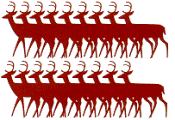United States Department of Agriculture, National Wildlife Research Center: Symposia

Contraception in Wildlife Management
Date of this Version
10-26-1993
Abstract
Wildlife damage management was so much simpler in the good old days. If deer (Odocoileus virginianus), beaver (Castor canadensis), or other animals were a problem in a particular situation, people simply had them shot, trapped, or poisoned. Not many years ago, most people would go along with this approach, and those who didn't like it were marginalized as the "radical fringe." Not so today. Greater and more diverse segments of the public want a say in what professionals decide to do with their wildlife. The public wants to participate in setting objectives for management and in approving the methods for accomplishing those objectives. Kania and Conover (1991) emphasized that wildlife agencies should respond to these societal changes rather than resist them, thereby enhancing the value of the wildlife resource for all people. Changes in sociopolitical values have resulted in more stakeholder groups who want to be included in wildlife management decisions today than at any other time since the advent of applied wildlife management in North America (Curtis and Richmond 1992).


Comments
Contraception in wildlife management. APHIS Technical Bulletin No. 1853. USDA, Animal and Plant Health Inspection Service, Washington, D.C., USA.